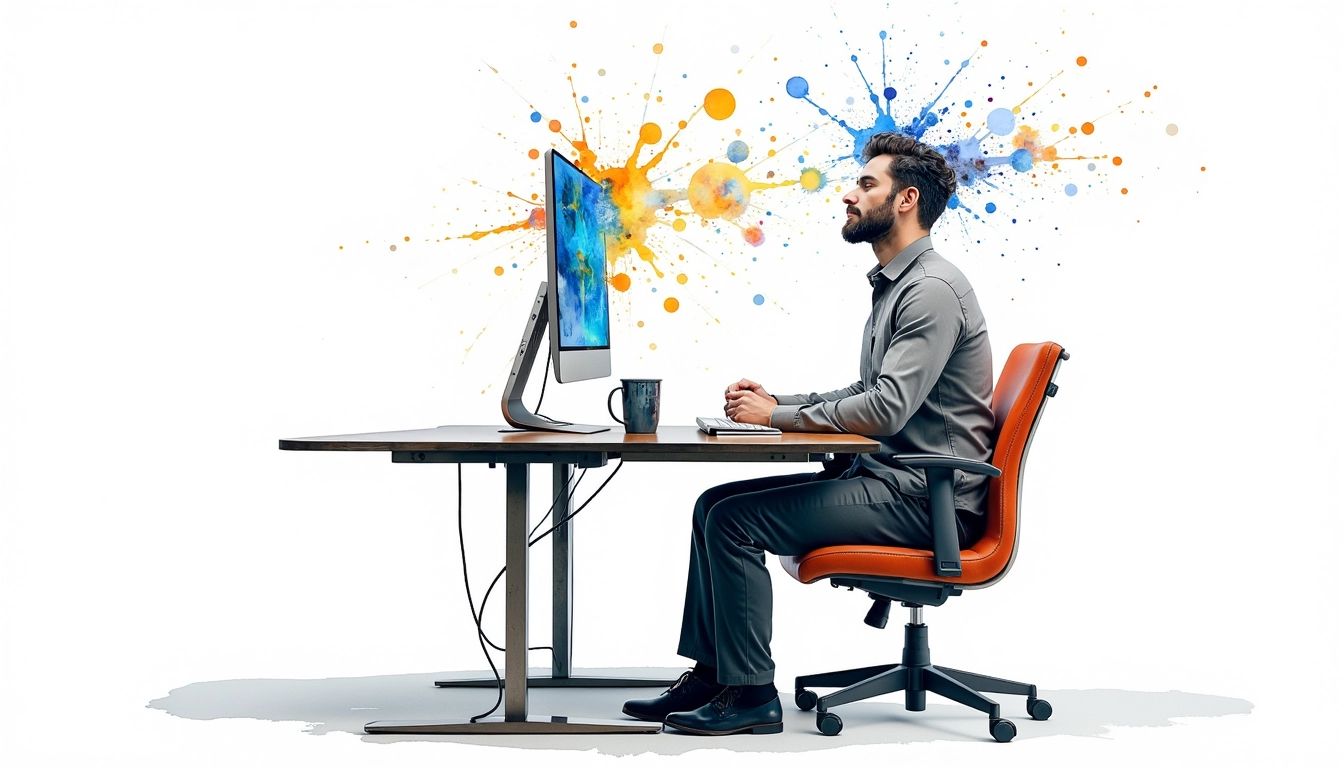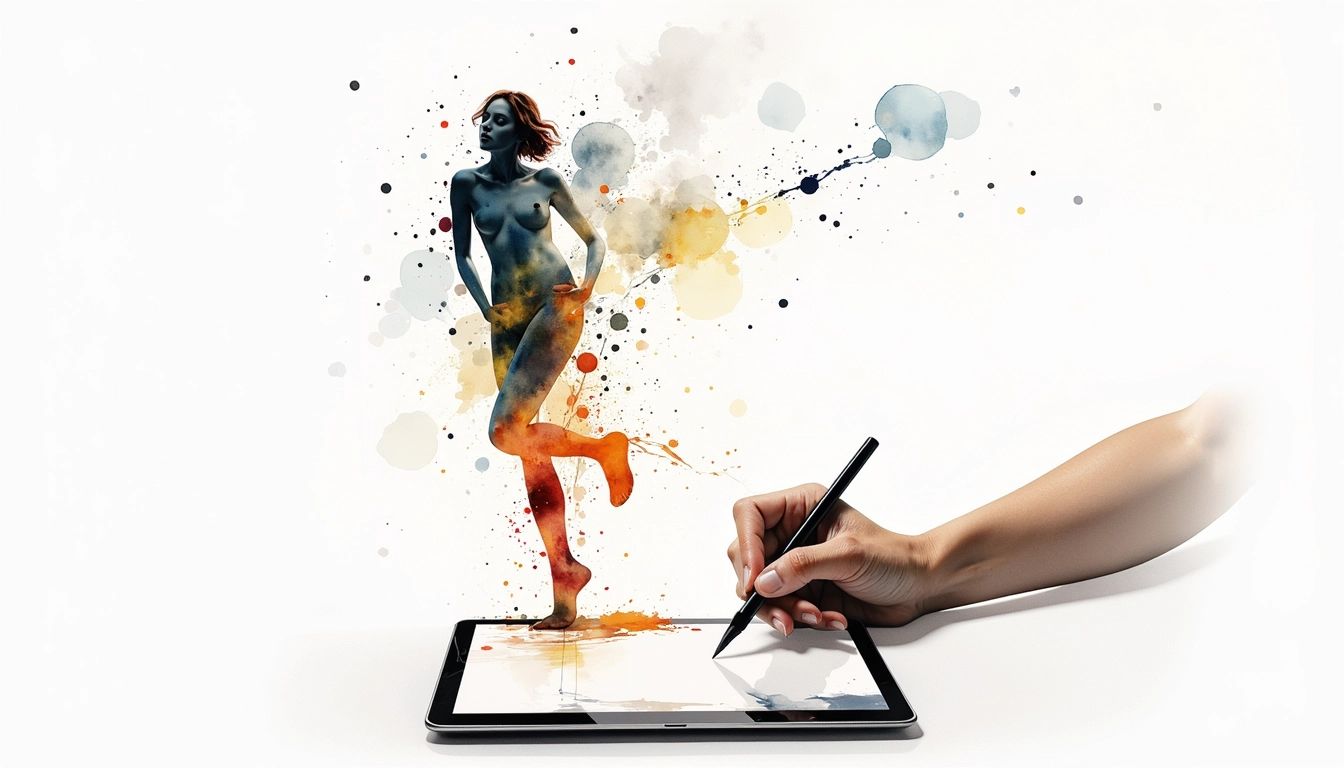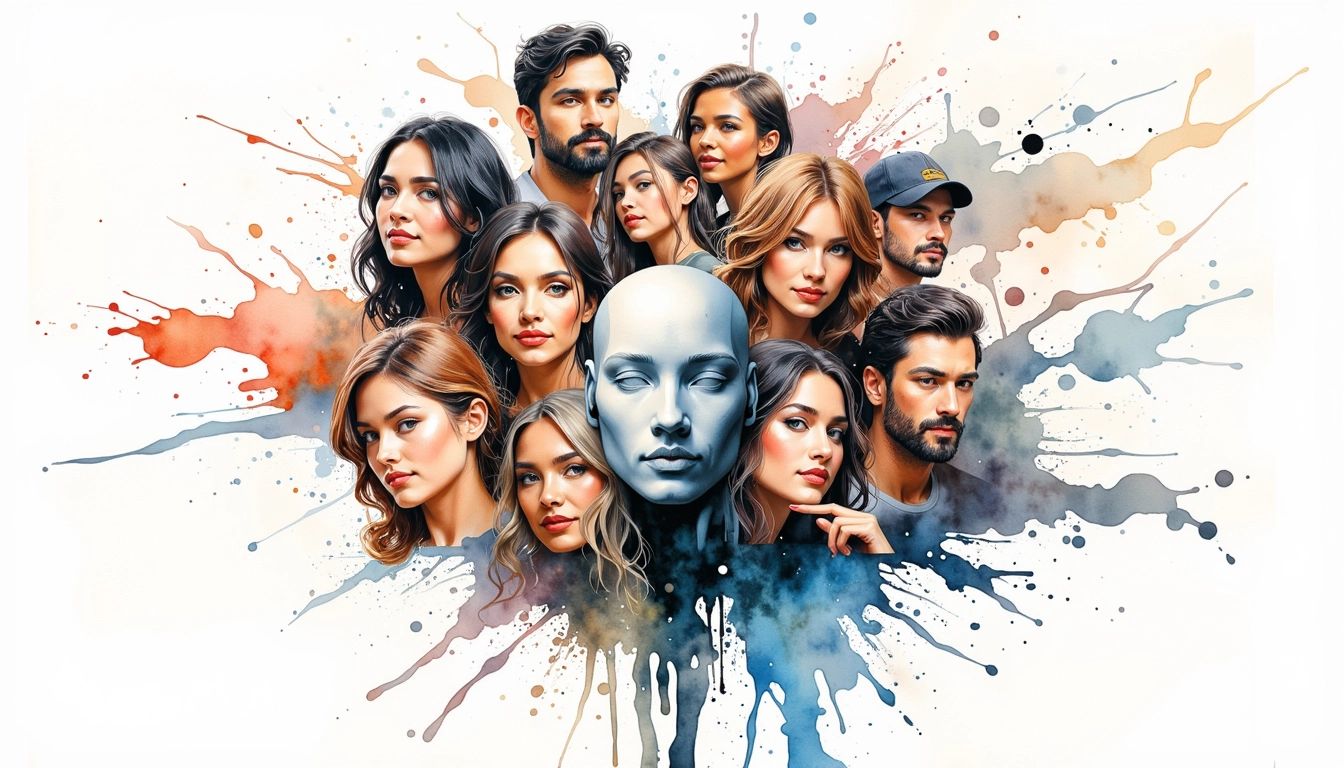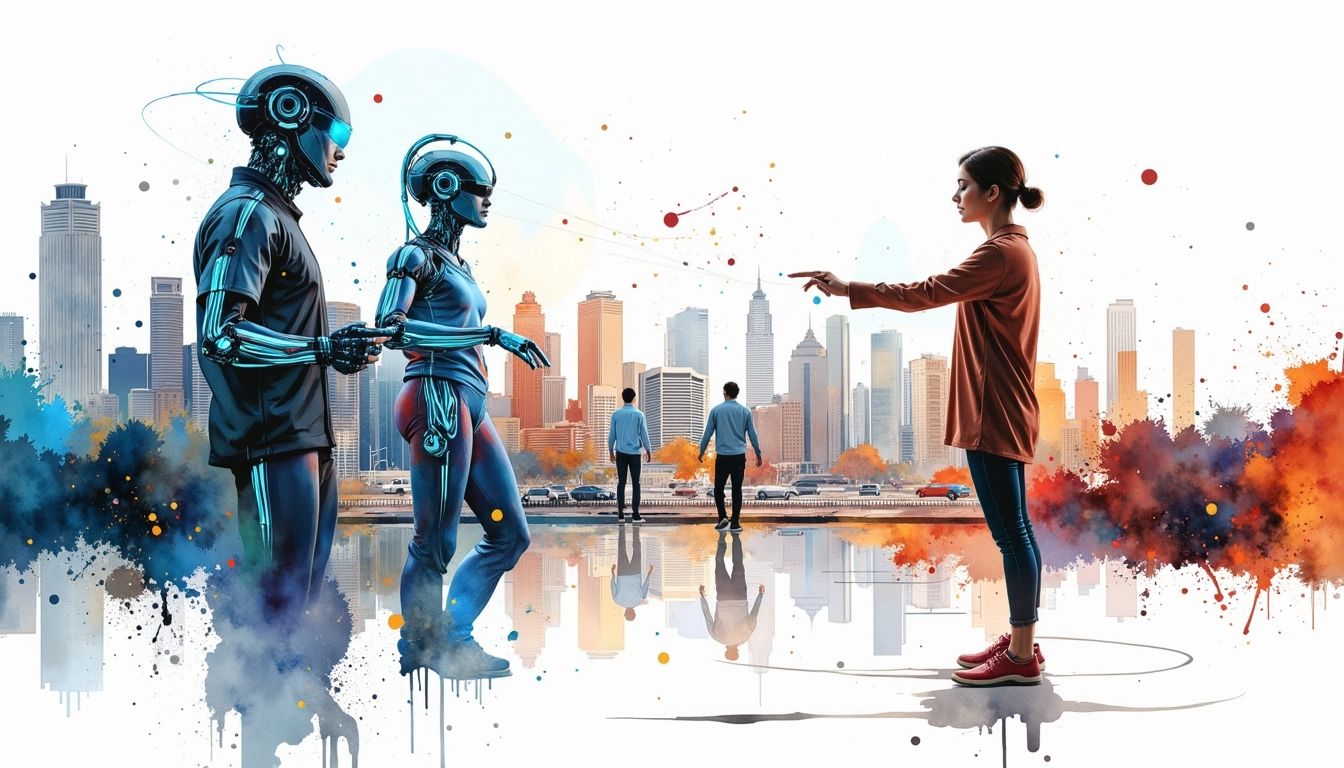The Rise of AI in Advertising

The advertising world is buzzing, and the hot topic is AI. AI-powered advertising isn't a far-off dream; it's reshaping the industry today. It's changing how ads are created, targeted, delivered, and improved. Imagine an incredibly efficient assistant that can analyze huge volumes of data, anticipate audience reactions, and create multiple ad versions faster than any human team. This goes beyond simply automating boring tasks; it unlocks a new level of creativity and effectiveness.
From Data Crunching to Creative Genius
AI's impact on advertising has been growing for years. Initially, algorithms were used for tasks like customer segmentation – grouping people based on their characteristics and purchase patterns. This led to more focused campaigns, though AI remained largely unseen. By the early 2000s, recommendation engines (like Amazon's product suggestions) emerged. This marked a significant step toward personalized ads, powered by AI's capacity to analyze large amounts of customer data and forecast their likes and dislikes.
Then came programmatic advertising, where AI took the reins of ad space buying and selling, optimizing campaigns in real-time. Advertisers gained the power to target specific groups, adjust bids according to how well ads performed, and stretch their budgets further.
The Creative Revolution
AI-driven advertising isn't solely about numbers and automation; it enhances the core creative process. Now, AI can generate ad components, from images and text to full video scripts. Imagine instantly creating numerous ad versions for various platforms and target groups. This allows human creatives to concentrate on the overall plan, key messages, and true innovation, while AI takes care of the production workload. This empowers smaller companies with limited budgets to develop high-quality creative materials they could not have previously afforded. You might be interested in: Latest Advertising Trends.
What's Next?
AI's role in advertising is destined to expand. As technology improves, we can anticipate even more advanced tools and methods. Imagine highly personalized ads that instantly respond to individual user actions, interactive ad experiences that blend seamlessly with content, and AI-powered analytics that give deeper understanding of campaign results. The future of AI-powered creative advertising lies in pushing limits, creating deeper audience connections, and driving exceptional outcomes.
Key AI Technologies in Creative Advertising
We've discussed AI's wide-ranging influence on advertising, from basic data analysis to the current creative surge. But what technologies drive this excitement around AI-powered advertising? Let's examine the specific AI tools making waves.
Machine Learning: The Data Maestro
Machine learning (ML) forms the foundation of most AI advertising tools. ML algorithms constantly learn from the data they process. They analyze previous campaign results, audience activity, and market patterns to discover trends and make predictions. Each click, view, and conversion informs the ML system, enhancing its ability to predict audience engagement. This enables highly precise targeting and optimization, ensuring your ads are seen by the right people at the right time.
Deep Learning: The Creative Spark
Deep learning (DL), a type of ML, goes even further. Inspired by the human brain, DL uses artificial neural networks to process information at a deeper level. This allows it to handle complex tasks like image recognition, natural language processing, and even creative content generation. It powers tools that create ad copy variations, design compelling visuals, and even produce full video scripts. Imagine giving DL your best ads – it analyzes what made them work and creates new versions for different audiences and platforms.
Natural Language Processing: The Conversation Starter
Want ads that resonate with your audience? Natural language processing (NLP) makes that possible. NLP empowers AI to understand, interpret, and generate human language. This is vital for creating effective ad copy that connects with your target group. It also drives chatbots that engage with customers, answering questions, giving personalized suggestions, and even making sales. It's like having a dedicated virtual sales force working around the clock.
Generative AI: The Content Machine
Generative AI, the newest AI development, is revolutionizing advertising creative. Models like GANs (Generative Adversarial Networks) and transformers generate entirely new content, from images and videos to music and code. Advertisers can instantly produce ads tailored to different groups and platforms. Need multiple banner ad versions for different social media channels? Generative AI can create them in minutes. This allows human creatives to focus on strategy and narrative while AI handles content production.
These core technologies are continuously advancing, pushing the limits of creative advertising. As they develop, we can expect even more groundbreaking innovations. From highly personalized ads to interactive content that blurs the lines between advertising and entertainment, AI will transform the advertising scene in exciting ways.
Creative AI Tools for Advertisers

Now we understand the tech behind AI-driven advertising; but where can you find these tools? The market is brimming with platforms ready to enhance your advertising efforts. Solutions abound, from creating ad copy and visuals to personalizing campaigns and automating mundane tasks. Let’s explore some of the exciting options.
AI Platforms for End-to-End Creative
Platforms like AdCreative.ai are your all-in-one resource for AI advertising creation. They integrate several AI functions in one place. Create different ad copy options, design visuals, and even write video scripts – all within a single interface. Some platforms personalize ads based on individual user data, ensuring your message truly resonates. These platforms are particularly useful for small businesses and teams with limited resources.
Specialized Tools for Specific Creative Needs
If you prefer a more targeted approach, specialized AI tools focus on specific creative elements. Jasper.ai and Copy.ai excel at creating marketing text, from ad headlines and slogans to longer pieces like blog posts and website content. DALL-E 2 and Midjourney generate striking visuals from text prompts, providing unique imagery that captures attention. These specialized tools introduce AI into your existing workflow, even if you're not ready for a full-platform solution.
AI-Powered Ad Platforms for Campaign Management
Beyond creative development, AI is transforming campaign management. Platforms like Google Ads and Meta Ads increasingly incorporate AI to optimize your campaigns instantly. They automatically change bids, target the most receptive audiences, and even produce custom ad variations for different platforms and groups. This automation saves time and effort, while maximizing your ad budget's impact. It's like having a virtual advertising manager constantly improving your campaigns. These AI-powered ad platforms offer detailed analytics and insights into campaign performance, enabling data-driven decisions and strategic refinement. This combined power of creative automation and smart campaign management is revolutionary for advertisers of all sizes, simplifying audience connection and achieving marketing aims.
This expanding array of AI advertising tools means you can find the perfect fit for your needs and budget. Whether you're a small business seeking a simple method to make attractive ads or a large enterprise needing a comprehensive platform to manage all creative work, AI elevates efficiency, creativity, and effectiveness. Explore the options, try out various tools, and discover the perfect complement for your advertising strategy.
AI-Driven Personalization

With all the discussion about AI-powered advertising, you might wonder how it truly connects with your audience. That's where the real impact lies: personalization. Generic ads sent to the masses are outdated. AI allows precisely targeted messages that speak directly to individual consumers, boosting engagement and driving conversions.
Understanding Your Audience on a Deeper Level
AI-driven personalization isn't simply adding a name to an ad. It's about truly understanding consumer interests, preferences, and even their current situation. AI analyzes a vast amount of data, from browsing patterns and purchase history to social media activity and location information, to create detailed profiles of each user. This lets advertisers create ads that feel like personalized suggestions rather than interruptions. Imagine an ad for a sweater appearing after someone checks the weather forecast and sees a cold front – that's the power of AI personalization.
Crafting Dynamic Creative that Adapts
Using these comprehensive user profiles, AI customizes the ad content itself. This might involve switching images or video clips to align with a user's interests, adjusting ad text to address their current needs, or changing the call to action based on past brand interactions. This personalization makes every ad feel relevant and engaging, increasing the chance of attracting attention and prompting a desired response. For instance, e-commerce companies can use AI to display different product recommendations in an ad based on user browsing history. Someone looking at running shoes sees different products than someone browsing winter coats.
Delivering the Right Message at the Right Time
Timing is critical in advertising, and AI excels at optimizing ad delivery to reach users at the perfect moment. This might be an ad for a coffee shop appearing just as someone walks by, or a movie promotion showing up as someone searches for showtimes. By combining personalized content with perfect timing, AI maximizes impact and drives outcomes.
This precise personalization surpasses traditional advertising methods. Brands can develop closer customer relationships, create more meaningful interactions, and achieve better overall results. As AI advances, we can expect even more sophisticated personalization techniques, making advertising feel increasingly like tailored recommendations. AI-powered advertising will shift from solely selling products to delivering valuable experiences that enhance the consumer journey.
Ethical Considerations
The swift progress of AI-driven advertising presents incredible opportunities, but also raises crucial ethical issues. Responsible use is essential to ensure AI benefits both companies and consumers. We must acknowledge potential drawbacks and prioritize transparency, fairness, and accountability in our AI advertising practices.
Avoiding Algorithmic Bias
One concern is the possibility of algorithmic bias. AI algorithms learn from data, and if that data reflects existing societal biases, the AI might perpetuate or even amplify them in ad targeting and creative. An AI trained primarily on data showing men in tech roles might inadvertently create ads underrepresenting women in those roles. We must actively identify and address bias in our data and algorithms to ensure fair and inclusive advertising.
Respecting User Privacy
Personalized AI advertising relies on collecting and analyzing user data. While this data is valuable for creating relevant ads, we must be open about how we collect and use this information. Users should control their data and be able to opt out of personalized advertising. Respecting privacy isn't just ethical; it's crucial for building trust and a positive brand image.
Maintaining Transparency
AI algorithms can be complicated and unclear. This lack of transparency can raise concerns about decision-making processes and fairness. We must strive for greater transparency, explaining how algorithms work and what influences ad targeting and creative. This openness fosters consumer trust and promotes accountability. It's also important to clearly label AI-generated content so users know they're interacting with machine-created material.
By addressing these ethical considerations, we ensure AI-powered advertising remains beneficial, enhancing the experience for both businesses and consumers. The future of advertising is promising, and ethical AI practices make it even brighter.
Future of AI in Creative Advertising

We've explored the current state of AI-powered advertising, but what does the future hold? The rate of innovation is remarkable, with seemingly boundless potential. The future of advertising promises an exciting journey.
Predictive Analytics and the Crystal Ball
Imagine knowing precisely which ad will connect with a specific audience before launching your campaign. That's the potential of predictive analytics. By analyzing past campaign data and consumer behavior, AI can predict which ads are likely to succeed with different groups and on different platforms. This eliminates guesswork, allowing marketers to use budgets efficiently and maximize returns. It's like having a crystal ball that offers concrete data-driven predictions.
Automation and the Rise of the Machines (in a Good Way)
We’ve seen AI automate elements of ad creation, from generating copy and visuals to optimizing bids and targeting. The future promises even more automation. Imagine AI orchestrating entire campaigns, adjusting instantly to market changes and consumer behavior. This allows human marketers to focus on broad strategy, brand development, and customer relationships, while AI handles daily campaign management. This isn't about replacing human creativity, but empowering it with AI's efficiency.
Generative AI: The Dawn of Hyper-Personalization
Generative AI will change personalization. Imagine ads that respond not just to user profiles but also their current circumstances. A raincoat ad might appear as someone steps outside into the rain. A banner ad could adapt its message based on a user's location or the time of day. This hyper-personalization creates seamless, engaging advertising that feels like helpful suggestions.
Interactive and Immersive Experiences
The future of AI-powered advertising is more than static images and text. It's about crafting interactive and immersive experiences that blend advertising and entertainment. Imagine augmented reality ads letting users try on clothes virtually or interactive video ads responding to user input. These experiences both capture attention and provide valuable information, building lasting brand impressions. As the metaverse grows, we'll see innovative and immersive ad formats seamlessly integrated into virtual environments.
The future of AI in creative advertising focuses on creating more personalized, engaging, and impactful campaigns. It's about connecting deeply with audiences and delivering the right message at the perfect time. As AI continues to advance, expect even more remarkable developments in the years ahead.
Ready to explore the future of video advertising? Aeon is an AI-powered video creation platform built for publishers, enabling you to easily create engaging video content from text, audio, or video. Transform your content strategy and boost engagement with Aeon's innovative features. Visit Aeon to learn more and revolutionize your video creation process.